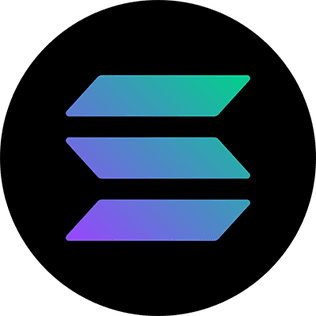What is Solana and Why is Everyone Talking About It?
Solana is a high-performance blockchain platform designed to host scalable and secure decentralized applications (DApps). Founded in 2017 by Anatoly Yakovenko and Raj Gokal, Solana was officially launched in March 2020.
What sets Solana apart is its ability to process up to 50,000 transactions per second (TPS), thanks to its innovative consensus algorithm called Proof of History (PoH). This makes it one of the fastest and most efficient blockchains on the market, with transaction fees under $0.01.
The Brain Behind Solana: Anatoly Yakovenko
Anatoly Yakovenko, a former Qualcomm engineer, is the co-founder and chief architect of Solana. With a strong background in high-performance operating systems, Yakovenko applied his expertise to create a blockchain that overcomes the scalability and speed limitations of its predecessors.
Together with Raj Gokal, a product development expert, they founded Solana Labs with the vision of democratizing access to blockchain technology and encouraging mass adoption of decentralized applications.
Where Can I Buy Solana (SOL)?
Buying SOL, Solana’s native token, is simple and accessible through several cryptocurrency exchanges. Some of the most popular platforms include:
- Binance: Allows you to buy SOL with credit/debit cards, bank transfers, and other payment methods.
- Coinbase: Offers SOL purchases via bank accounts, debit cards, and wire transfers.
- Kraken: Supports SOL purchases using credit/debit cards and PayPal (depending on the region).
- Bit2Me: A Spanish platform that enables fast and secure buying and selling of SOL.
How Many Solana (SOL) Tokens Are in Circulation?
Currently, there are approximately 520 million SOL tokens in circulation, from a total planned supply of 489 million. This number may vary due to factors such as inflation and staking rewards.
Solana’s initial inflation rate is 8%, which will decrease by 15% annually until reaching a long-term rate of 1.5% by 2031.
Unique Features of Solana
- Speed and scalability: Thanks to PoH, Solana can process thousands of transactions per second without sacrificing decentralization.
- Low fees: Transaction fees on Solana’s network are significantly lower than those on blockchains like Ethereum.
- Expanding ecosystem: Solana hosts a growing variety of DApps, including DeFi platforms, NFT marketplaces, and blockchain games.
- Active community: A global community of developers and enthusiasts supports the ongoing growth and innovation of Solana.
Solana and Digital Art: NFTs and Beyond
Solana has emerged as a leading platform for creating and trading non-fungible tokens (NFTs). Its high speed and low costs have attracted artists and collectors seeking an efficient alternative to Ethereum.
Marketplaces like Magic Eden and Tensor have gained popularity within the Solana ecosystem, offering a wide range of NFT collections. Additionally, the Metaplex protocol facilitates the efficient creation and management of NFTs on the network.
The Future of Solana: What Lies Ahead?
Solana continues to innovate and expand its reach in the blockchain world. Recently, it has been considered a potential candidate for an ETF approval, which could increase its visibility and adoption in traditional markets.
Moreover, the Solana Labs team is working to improve infrastructure and user experience through initiatives like Solana Mobile Stack and the Saga mobile device, aiming to bring blockchain technology into the mobile space.
Final Thoughts
Solana has established itself as one of the most promising and efficient blockchain platforms in the crypto ecosystem. Its combination of speed, scalability, and low costs makes it an attractive alternative for developers, investors, and general users.
With a vibrant community and a constant focus on innovation, Solana is well-positioned to play a key role in the evolution of the decentralized digital world.
